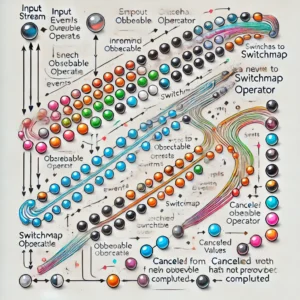Front-end frameworks have become increasingly popular among developers in recent years. These frameworks are collections of pre-written code that can be used to build the user interface of a website or application. They provide a solid foundation for responsive design and can be a great tool for prototyping.
One of the main benefits of using a front-end framework is that it can save developers a lot of time. Instead of writing every line of code from scratch, they can use pre-built components and templates to quickly create the user interface. This can be especially helpful when working on tight deadlines or when trying to get a project up and running quickly.
Another advantage of using a front-end framework is that it can make it easier to maintain and update a website or application. Since the code is organized and structured in a specific way, it can be easier to find and fix bugs or make changes to the design. Additionally, many frameworks are open-source, which means that developers can contribute to the codebase and improve the framework over time.
Understanding Front-End Frameworks
As a front-end developer, I have found that working with a framework can greatly enhance my productivity and efficiency. A front-end framework is a collection of pre-written code that can be used to build web applications quickly and easily. It provides a set of tools, libraries, and best practices that can help developers create responsive, mobile-friendly, and visually appealing web pages.
One of the main benefits of using a front-end framework is that it can save developers a lot of time. Instead of starting from scratch, developers can use pre-built components and templates to create their web pages. This can be especially helpful for large projects where there are many pages to be built.
Another benefit of using a front-end framework is that it can help ensure consistency across a website. By using a consistent set of styles and components, developers can create a cohesive and professional-looking website that is easy to navigate. This can be especially important for websites that have many different pages or sections.
Front-end frameworks can also help improve the performance of a website. Many frameworks are designed to be lightweight and optimized for speed, which can help reduce page load times and improve the user experience. Additionally, many frameworks come with built-in optimization tools, such as minification and caching, that can further improve performance.
Overall, I have found that using a front-end framework can be a great way to streamline the development process and create high-quality websites quickly and efficiently. While there may be a learning curve when first using a framework, the benefits can be well worth the effort.
Benefits of Using Front-End Frameworks
As a front-end developer, I have found that using frameworks has been instrumental in simplifying and structuring the process of creating a website. Here are some of the key benefits of using front-end frameworks:
Efficient Development Process
Front-end frameworks provide pre-built components and templates that can be easily customized to meet the specific needs of a project. This saves a lot of time and effort that would otherwise be spent on creating these components from scratch. With a framework, I can focus on the unique aspects of the project and avoid reinventing the wheel.
Consistent User Interface
Using a front-end framework ensures a consistent user interface across the entire website. This is because frameworks provide a set of pre-designed UI elements that can be easily reused throughout the project. This not only saves time but also ensures that the website looks and feels cohesive.
Code Reusability
Front-end frameworks promote code reusability, which is a key factor in efficient development. With a framework, I can create a set of reusable components and templates that can be easily integrated into different parts of the website. This not only saves time but also ensures that the code is consistent and maintainable.
Community and Documentation
Front-end frameworks have large and active communities that provide support and resources for developers. This includes documentation, tutorials, forums, and open-source projects. With a framework, I can tap into this community and leverage their knowledge and expertise to improve the quality and efficiency of my work.
Cross-Browser Compatibility
Front-end frameworks are designed to work across different browsers and devices. This ensures that the website is accessible and usable by a wide range of users. With a framework, I can focus on creating a responsive and adaptive design that works seamlessly across different platforms.
Performance Optimization
Front-end frameworks are optimized for performance and speed. This includes features such as lazy loading, code splitting, and caching. With a framework, I can ensure that the website loads quickly and efficiently, which is essential for providing a good user experience.
Security and Best Practices
Front-end frameworks follow best practices for security and accessibility. This includes features such as SSL encryption, input validation, and error handling. With a framework, I can ensure that the website is secure and compliant with industry standards and regulations.
In summary, using a front-end framework can greatly benefit the development process by saving time, promoting code reusability, ensuring consistency, and providing access to a supportive community. Additionally, frameworks can improve the performance, security, and accessibility of the website.
Popular Front-End Frameworks
As a web developer, I know that choosing the right front-end framework can be a crucial decision. With so many options available, it can be challenging to decide which one to use. In this section, I will discuss some of the most popular front-end frameworks.
React
React, often referred to as ReactJS, is a popular and widely used open-source JavaScript library for building user interfaces in web applications. It was developed and is maintained by Facebook and a community of individual developers and companies. React is known for its flexibility, performance, and ability to create interactive and dynamic user interfaces. Here’s an overview of React:
- Component-Based Architecture: React is based on a component-based architecture. Developers build applications by creating reusable components, each responsible for a specific piece of the user interface. These components can be composed and nested to create complex interfaces. This modularity makes code easier to maintain and encourages reusability.
- Virtual DOM: React utilizes a Virtual DOM (Document Object Model) to optimize the rendering of components. When data changes in a React application, it doesn’t immediately update the real DOM. Instead, React first updates a virtual representation of the DOM and then calculates the most efficient way to update the real DOM. This approach minimizes actual DOM manipulation, resulting in improved performance.
- Declarative Syntax: React promotes a declarative approach to building user interfaces. Instead of imperatively describing how the UI should change in response to data or user interactions, developers specify what the UI should look like for a given state. React takes care of the underlying updates and ensures that the UI reflects the desired state.
- One-Way Data Binding: In React, data flows in one direction, typically from parent components to child components. This unidirectional data flow simplifies the tracking of data changes and enhances predictability.
- Component Lifecycle: React components have a lifecycle with various methods that allow developers to hook into the process at different stages, such as when a component is created, updated, or destroyed. This makes it possible to perform actions like data fetching, updates, and cleanup as needed.
- Reusable and Extensible: React components are highly reusable, which can significantly speed up development. Moreover, React can be easily extended with libraries and tools to enhance its capabilities. It’s common to use state management libraries like Redux or MobX alongside React to manage application data and state.
- Community and Ecosystem: React has a large and active community of developers and a rich ecosystem of libraries and tools. This results in a wealth of resources, tutorials, and third-party components available to developers. It’s also commonly used in conjunction with other technologies like React Native for mobile app development.
- JSX (JavaScript XML): React uses JSX, a syntax extension for JavaScript that allows developers to write HTML-like code within JavaScript. JSX makes it easier to describe the structure of user interfaces in a more readable and maintainable way.
- Server-Side Rendering (SSR): React supports server-side rendering, which can improve the initial load time and search engine optimization (SEO) of web applications. It enables the server to render the initial HTML markup before sending it to the client, improving perceived performance.
- Accessibility: React encourages best practices in web accessibility, making it easier for developers to create applications that are usable by people with disabilities.
React is a versatile library that has been used in various types of projects, from simple websites to large-scale, complex web applications. Its focus on reusability, performance optimization, and the rich ecosystem of tools and libraries make it a popular choice for many web developers.
Angular
Angular, often referred to as Angular 2+ or Angular (formerly AngularJS), is a popular open-source JavaScript framework for building dynamic and single-page web applications. Developed and maintained by Google, Angular provides a comprehensive set of tools and libraries for developing complex, feature-rich web applications. Here’s an overview of Angular:
- Component-Based Architecture: Angular follows a component-based architecture, which means that applications are structured as a hierarchy of components. Each component is responsible for a specific part of the user interface and encapsulates its own logic, templates, and styles.
- Two-Way Data Binding: Angular offers two-way data binding, meaning that changes in the application’s model (data) are automatically reflected in the view (UI), and vice versa. This simplifies the synchronization of data between components and the user interface.
- Dependency Injection: Angular has a built-in dependency injection system that makes it easy to manage and share application-wide services, such as data retrieval, authentication, and logging. This promotes modularity and reusability of code.
- Directives: Angular introduces directives, which are special markers in the HTML that extend the functionality of elements or create custom behavior. Directives include structural directives (e.g.,
*ngFor,*ngIf) and attribute directives (e.g.,[ngModel]) that enable developers to manipulate the DOM and UI. - Template System: Angular templates are written in HTML with additional Angular-specific syntax for data binding and dynamic rendering. This approach simplifies the creation of views and encourages a clear separation between the presentation and business logic.
- Router Module: Angular includes a powerful routing system that enables developers to create single-page applications with multiple views, each with its own URL. This allows for a smoother user experience, as only the relevant parts of the page are updated when navigating.
- Observables and RxJS: Angular relies on RxJS, a popular library for handling asynchronous operations and events. Observables are used for managing data streams and handling complex asynchronous tasks.
- Cross-Platform Development: While Angular is primarily used for web applications, it can also be employed in cross-platform mobile app development using frameworks like Ionic and NativeScript, enabling the creation of web, iOS, and Android applications from a single codebase.
- Community and Ecosystem: Angular has a vibrant community and a rich ecosystem of third-party libraries, tools, and extensions. Developers can leverage this ecosystem to extend the framework’s capabilities and improve their workflow.
- Testing: Angular includes testing utilities and a testing framework, making it easier to write unit tests and end-to-end tests for applications. This focus on testing helps maintain code quality and reliability.
- Internationalization and Accessibility: Angular provides features for internationalization (i18n) and accessibility, making it easier to create web applications that are accessible to people with disabilities and can be localized for different languages and regions.
- Command-Line Interface (CLI): Angular offers a powerful CLI tool that simplifies project setup, code generation, and development tasks, enhancing productivity.
Angular is a versatile framework suitable for a wide range of web applications, from small projects to large, enterprise-level applications. It excels in managing complex data, views, and the interaction between components. While it has a steeper learning curve compared to some other front-end frameworks, it offers a robust set of features for developers who need to build ambitious and feature-rich web applications.
VueJs
Vue.js, commonly referred to as Vue, is an open-source JavaScript framework for building user interfaces. It is often used for developing web applications and single-page applications (SPAs). Vue is known for its simplicity, ease of integration, and a progressive approach to web development, making it a popular choice for both beginners and experienced developers. Here’s an overview of Vue.js:
- Progressive Framework: Vue is often described as a “progressive framework” because it can be incrementally adopted in a project. You can use Vue to enhance specific parts of your application, or you can build a complete SPA with it. This flexibility allows developers to use Vue in a way that best fits their needs.
- Component-Based Architecture: Vue is built on a component-based architecture, where the user interface is divided into reusable and self-contained components. Each component encapsulates its own structure, behavior, and styles, which promotes code reusability and maintainability.
- Data Binding: Vue provides a two-way data binding system that automatically synchronizes changes in the application’s model (data) with the user interface. This means that when data changes, the view updates, and vice versa. This simplifies the process of building dynamic and responsive UIs.
- Directives: Vue uses directives to add special behavior to elements in the DOM. Directives are prefixed with “v-” and enable developers to manipulate the DOM and apply dynamic functionality. Examples include
v-modelfor two-way data binding andv-forfor rendering lists. - Template Syntax: Vue uses an HTML-based template syntax that allows developers to declaratively render the UI and specify data binding and logic directly in the template. This results in cleaner and more readable code.
- Virtual DOM: Similar to React, Vue employs a Virtual DOM to optimize rendering performance. When data changes, Vue updates a virtual representation of the DOM and computes the most efficient way to update the actual DOM. This minimizes the amount of manipulation needed for UI updates.
- Computed Properties and Watchers: Vue provides computed properties and watchers to handle complex data transformations, asynchronous operations, and side effects. Computed properties cache results based on their dependencies, while watchers allow you to respond to changes in data.
- Routing: Vue offers a router library called Vue Router, which allows developers to create SPAs with multiple views and handle client-side routing. This is essential for creating navigable and user-friendly web applications.
- State Management: For managing application state, Vue can be combined with Vuex, a state management library that helps control and synchronize data across different components.
- Vue CLI: Vue comes with the Vue CLI (Command-Line Interface), which simplifies project setup, scaffolding, and development tasks. It provides a streamlined workflow for building Vue applications.
- Community and Ecosystem: Vue has a growing and enthusiastic community of developers, resulting in a rich ecosystem of third-party libraries, plugins, and components that can be easily integrated into Vue applications.
- Official Documentation: Vue boasts well-maintained and comprehensive documentation that makes it accessible for both beginners and experienced developers. There are also numerous tutorials and resources available to learn and master Vue.js.
Vue.js is a versatile framework that offers a smooth and pleasant development experience. Its progressive nature, lightweight footprint, and a focus on simplicity make it an excellent choice for a variety of web development projects, from simple websites to more complex, interactive applications.
Overall, choosing the right front-end framework depends on the specific needs of your project. Each of these frameworks has its own strengths and weaknesses, and it is important to evaluate them carefully before making a decision.
Choosing the Right Front-End Framework
When it comes to choosing the right front-end framework for a project, there are several factors to consider. Here are some key considerations to keep in mind:
Project Requirements
The first step in choosing the right front-end framework is to determine the specific requirements of the project. Consider the type of application you are building, the target audience, and the devices it will be used on. For example, if you are building a mobile app, you may want to choose a framework that is optimized for mobile devices.
Learning Curve
Another important factor to consider is the learning curve of the framework. Some frameworks are easier to learn than others, and this can impact the speed and efficiency of development. Consider the experience level of your team and the time available for learning the framework. Additionally, consider the availability of learning resources such as documentation, tutorials, and community support.
Community and Support
The community and support around a framework can also be an important consideration. A strong community can provide valuable resources, support, and updates to the framework. Look for a framework with an active community and a history of regular updates and bug fixes.
Overall, choosing the right front-end framework can have a significant impact on the success of a project. By considering factors such as project requirements, learning curve, and community support, you can make an informed decision and ensure the best possible outcome for your project.
Conclusion
In conclusion, front-end frameworks are an essential tool for web developers to streamline their workflow and produce high-quality websites efficiently. By offering pre-built components, efficient rendering, and powerful state management, front-end frameworks can significantly benefit the development process.
One of the main advantages of using a front-end framework is that it can save time and effort in developing websites. With pre-built components, developers can focus on creating custom features and functionalities that are unique to their project. Moreover, front-end frameworks provide a solid foundation for responsive design, which is crucial in today’s mobile-first world.
Another advantage of using front-end frameworks is that they can improve the overall performance of a website. By reducing load times and optimizing code, front-end frameworks can significantly enhance the user experience. This, in turn, can lead to better engagement, increased conversions, and higher user retention rates.
However, it’s important to note that front-end frameworks are not a one-size-fits-all solution. Developers must carefully consider their project requirements and choose a framework that best suits their needs. Factors to consider include core features, popularity, usability, ease of integration, mobile development support, rendering on the server, future support, and flexibility.
Overall, front-end frameworks can be a valuable asset to any web development project. With their numerous benefits, they can help developers create high-quality websites efficiently and effectively.






